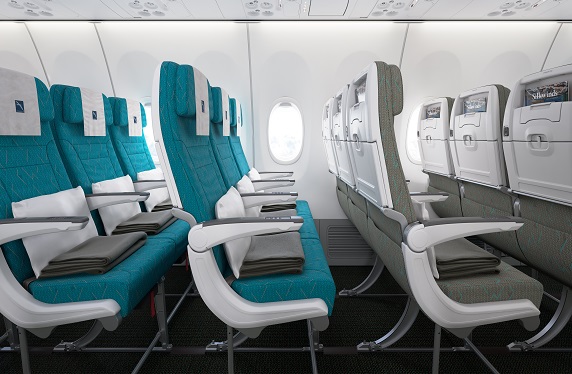SilkAir is a wholly owned subsidiary of Singapore Airlines, operating mostly regional routes as a full service airline with its own fleet. It shares the same hub in Singapore, and has the same frequent flyer program with Singapore Airlines. However, it does not belong to Star Alliance since it’s technically a different airline. The arrangement is not unlike Cathay Pacific’s Cathay Dragon, which offers a full service product but under a different “sister airline” with a separate fleet with shorter flights.
Singapore Airlines today announced that they are investing $100 million to upgrade SilkAir’s cabins, and eventually will merge SilkAir into Singapore Airlines in an initiative that will roll out in the coming years. There will also be a shuffling of routes between the two “arms” of Singapore Airlines in the process.
The cabin refresh will start in 2020, but will include the installation of lie-flat seats in Business Class, as well as seat-back IFE in both Business Class and Economy Class. Singapore Airlines says that this is to ensure “closer product and service consistency across the SIA Group’s full-service network.”

Singapore Airlines Regional Business Class onboard the Boeing 787. Source: SIA
With the ever increasing competition from low cost carriers (LCCs), legacy carriers in Asia have found themselves either needing to really differentiate their full-service offering, create a low cost carrier arm to effectively compete, or in Singapore Airlines’ case, both.
On their new Boeing 787s, Singapore Airlines is basically offering lie-flat Business Class seats on regional routes. Meanwhile, the budget arm of Singapore Airlines, Scoot, offers cheaper fares on its far less luxurious seats onboard their 787.
SilkAir brands itself as a full service carrier, offering free meals and luggage allowancess where LCCs do not. On the other hand, though, the are still lacking in some onboard offerings. For example, they still don’t offer seat-back IFE on all seats, which is definitely problematic with the full service label, especially in Asia.

SilkAir Economy Class. Source: SIA
This is certainly an interesting development, and I can sort of understand the rationale. SilkAir, as it stands, is sort of in an awkward position—regional, and only kinda “full service.” I think the introduction of flat bed seats will be one particular change to look out for. SilkAir operates an entirely narrow body fleet, so we very well might be looking at an entirely new cabin product here.
Obviously, this is a process that will take years. However, aligning cabin products will create a more cohesive experience with Singapore Airlines, and may just be worth the effort. With the eventual merging of the brands, it might also open up more opportunities and destinations for Star Alliance members from other airlines when redeeming miles.
The responses below are not provided or commissioned by the bank advertiser. Responses have not been reviewed, approved or otherwise endorsed by the bank advertiser. It is not the bank advertiser's responsibility to ensure all posts and/or questions are answered.